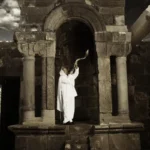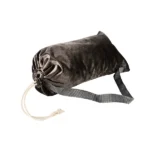Our Kosher Shofar Guide for you. where tradition and craftsmanship converge to bring you the essence of this timeless ceremonial instrument. Delve into the heart of Jewish rituals as we explore the significance of a Kosher Shofar, its meticulous creation process, and the art of producing soul-stirring sounds. Whether you’re a seasoned shofar blower or a curious newcomer, our guide is your companion in understanding, maintaining, and cherishing the spiritual resonance of this symbol deeply embedded in Jewish culture. Join us on this harmonious quest, where each page resonates with the echoes of tradition and devotion. Welcome to the Kosher Shofar Guide – where the ancient meets the contemporary, and the sacred sound of the shofar continues to echo through generations.
A Kosher Shofar is a ceremonial musical instrument crafted from the horn of a kosher animal (Not from Cows), usually a ram there is Types of Shofars. To be considered kosher, the Shofar must undergo a meticulous process to ensure it meets specific religious requirements. These include the proper removal of cartilage, ensuring the horn is not cracked, and following the prescribed measurements. A certified Shofar is an integral part of Jewish traditions, used during Rosh Hashanna and Yom Kipur ad also in ceremonies and festivals.
Crafting a Shofar is a skillful art that involves several steps. Firstly, the horn is carefully selected and cleaned, ensuring it meets the kosher standards. Next, the cartilage is removed, and the horn is flattened to create a uniform shape. The Shofar is then polished and hollowed out, transforming it into a sacred instrument ready for use. you can red here How to Make Shofar?

The Shofar emits distinct sounds with specific meanings. The sound of Shofar
Tekiah is a long, unbroken blast symbolizing a call to attention.
Shevarim consists of three short, broken blasts, representing repentance.
Teruah comprises nine rapid, staccato sounds, signifying alarm or awakening. Understanding and mastering these ritual sounds allows you to actively participate in various Jewish ceremonies and celebrations.
Cleaning your Shofar is crucial for maintaining its integrity and ensuring it produces clear sounds. Gently wipe the exterior with a soft, damp cloth to remove dust and residue. Avoid using harsh chemicals or abrasive materials that may damage the horn. For the interior, you can use a small brush or compressed air to remove any debris. Proper cleaning enhances both the visual appeal and the acoustics of your Shofar.


The Shofars at Kol Shofar are meticulously handcrafted in our family workshop, paying maximum attention to the highest level of quality, to Kashrut, ease of blowing, cleanliness and producing a special sound. Our customers say they can recognize our Shofars immediately anywhere in the world, due to our unique handprint.
אתר זה משתמש בקובצי Cookie ואוסף מידע שיאפשר לנו לשפר את חוויית הגלישה שלך באתר. על ידי לחיצה על “אישור” אתה מסכים לשימוש בקובצי Cookie ולמדיניות הפרטיות שלנו. אם תרצה, תוכל להשבית קובצי Cookie בהגדרות הדפדפן שלך. למידע נוסף, עיין במדיניות הפרטיות ובתקנון שלנו.